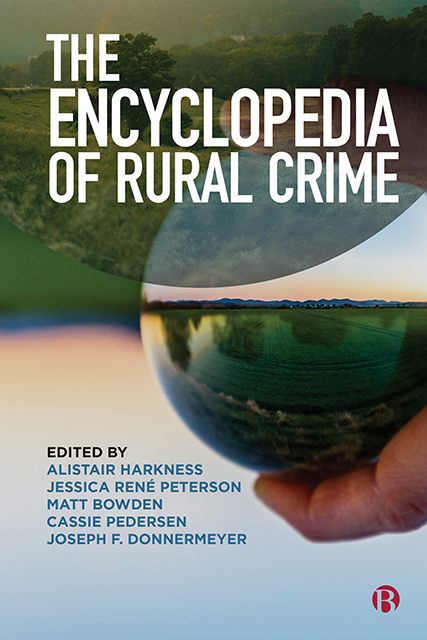Book contents
19 - Drugs and Public Health
Published online by Cambridge University Press: 20 June 2023
Summary
Defining rural drug use and public health
Research has shown that the burden of alcohol and other drug (AOD) use increases with remoteness. The majority of research on rural drug use and harm emanates from the United States, where there has been a clearly documented opioid overdose epidemic in recent times and previous research on other drugs that historically have affected rural populations (see Schalkoff et al, 2020; Thomas et al, 2020). There are distinctive features of rural environments that shape the risk of drug-related harms. Economic, physical, social and policy factors shape rural risk environments (a framework developed by Rhodes, cited in Thomas et al, 2020).
Economic risks
Economic conditions are an important factor in shaping risk in the lives of people using AOD. The decline of industries and loss of manufacturing lead to high unemployment rates and residents living below the poverty line. It also leads to changes in employment opportunities and a lack of opportunities to generate income, making healthcare or some harm reduction options cost-prohibitive.
This macro-environment of economic distress influences micro-environmental risk factors: for instance, job loss leads to the use of AOD to cope with stress or depression from the lack of economic prospects. Research has also shown that economic strains lead people to engage in riskier behaviours such as drug injecting as a means to cut costs associated with use. Owing to the lack of economic opportunities linked with economic restructuring or deterioration, informal economies have grown as alternative means of survival (such as drug dealing and prostitution), shaping the risk of drug-related harm in rural places.
Physical risks
There are several physical conditions that shape drug-related harm in rural areas. The dispersed nature of rural populations and the geographic distances between rural places and urban centres lead to several issues, such as less access to transportation (for example high expenses, limited public transport options) and greater travel to or an inability to access services. These spatial inequalities may lead to an increased risk of future AOD use, overdose and/or risky injection behaviours.
- Type
- Chapter
- Information
- The Encyclopedia of Rural Crime , pp. 81 - 83Publisher: Bristol University PressPrint publication year: 2022



